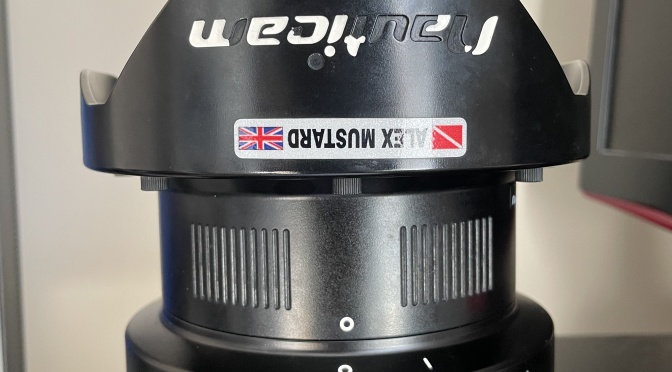Few days ago Alex Mustard popped in to drop his WWL-DRY aka WACP-C prototype so that I could conduct some experiments for the enjoyment of the entire underwater community on Sony E-mount.
This lens is not the same of the current WACP-C but it is very similar. It does not have a float collar, a bit like the original WWL-1 dimensionally appears a few mm different from the WACP-C specs.
The lens seems a bit shorter.

The dome diameter is identical somewhere in the region of 130mm.
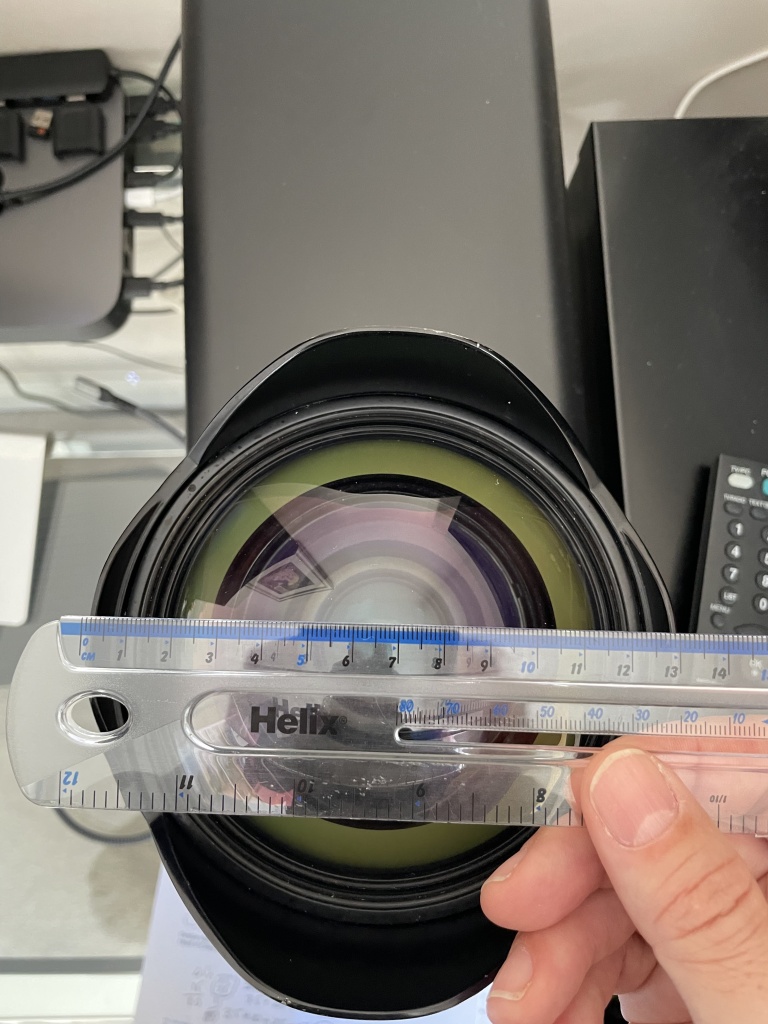
The lens is very heavy in water so I needed some floatation.
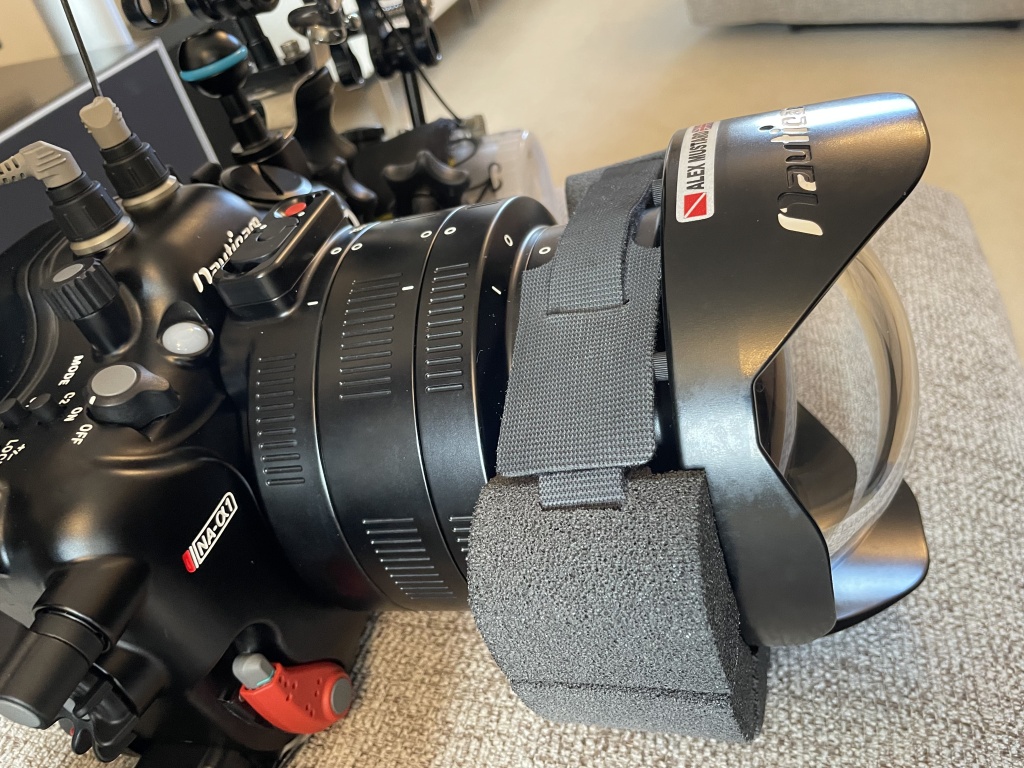
I rented a Tamron 28-75mm G2 from lenspimp only to discover it would not fit any of my extensions. Alex Tattersal has sent me an adapter on loan but it did not make it for my pool session.
I therefore decided to use my Tamron 17-28mm although the extension was 5mm too long I got no vignetting at 26mm.

I exchanged notes with Alex who told me he tried all sorts of optics with his Nikon only to use a 1990 lens now discotinued as all modern fast lenses would refuse to work properly. I was determined to try anyway confident I would get good results.
Pool Tests
Arrived in Luton for a short one hour session last night I took my usual props. The first set of tests show already some interesting results.
I always start as close I can get to the props to fill the frame.

At f/5.6 the centre is very sharp however I noted the background and were not particularly crisp while the centre was but not in the background. There is an issue of depth of field so I started stopping down the lens.

By f/8 results were already very good considering the shooting distance. Consider that a shot like tha requires f/16 on a fisheye or rectilinear to have sufficient depth of field.
By f/11 we are in a really good place.
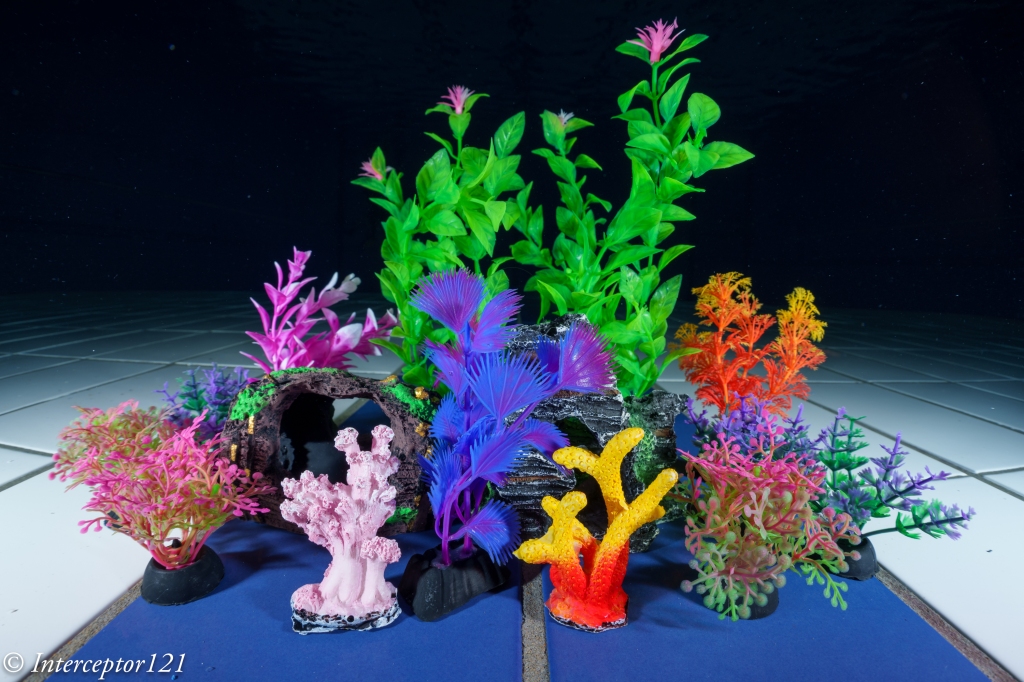
The depth of field is not quite enough for the plant in the back but the edges are sharp.
To show that this is a genuine depth of field issue look at this shot at 17mm in APSC.
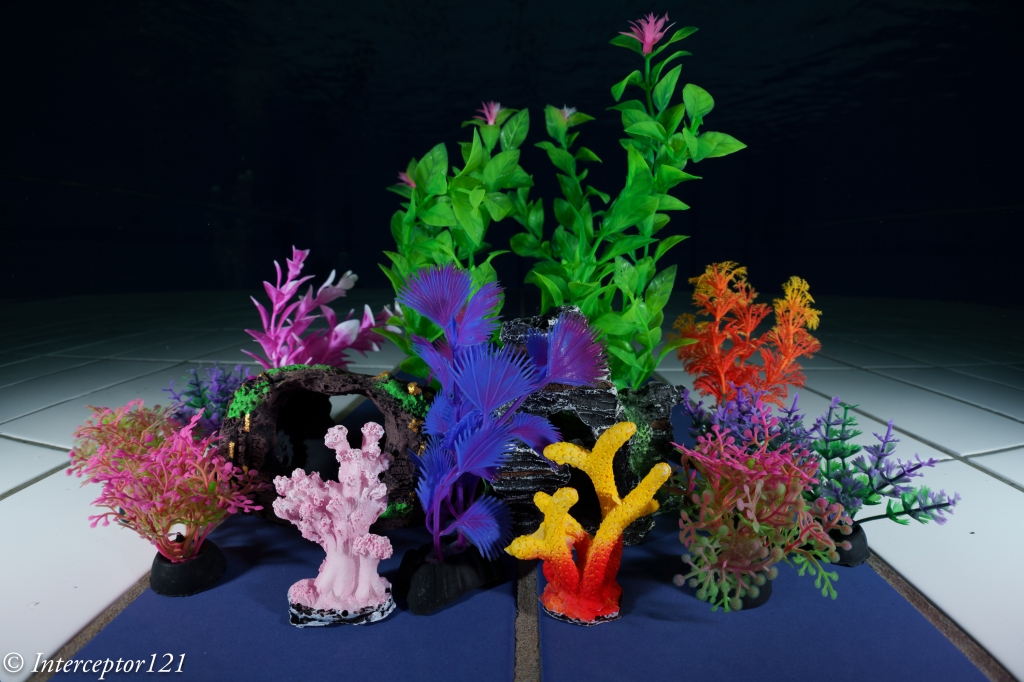
It looks very much identical although this is even wider at 25.5mm equivament.
The second step is to look at edge sharpness the pool provides a nice tiled wall for this purpose. Here am shooting at around 1.5 meters.
You can see immediately that the frame is sharp throughout at f/5.6

Moving to f/8 improves edges
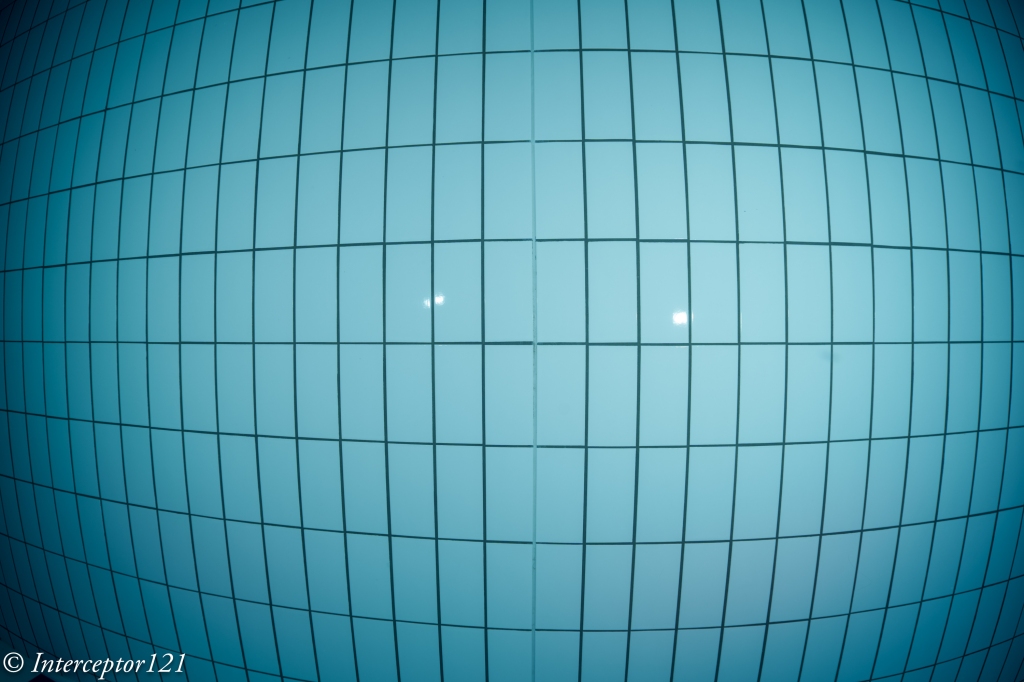
f/11 brings better edges but in my opinion not the best centre.

This reflects very much the nature of the master lens which is outstanding in the centre at f/5.6 with so so edges but very good on both accounts at f/8. F/11 starts showing an overall resolution loss.
I then moved to test field of curvature.

The lens has virtually no field of curvature and the edges are good already at f/5.6.

By f/8 the result is excellent.
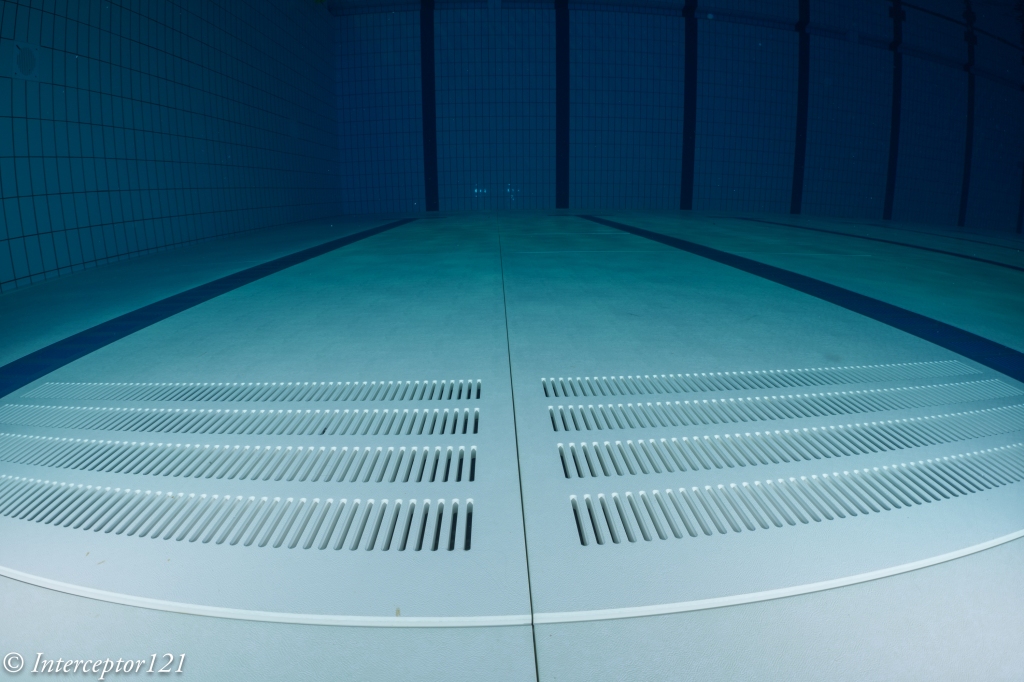
At f/11 better edges but slightly worse centre.
Having completed the lab tests it was time to shoot some divers however I was coming to the end of the hour and they had started surfacing!

Shots at distance with f/5.6 look great.

Consider the shutter speed is low as I was trying to get some ambient light and the subject far so there is some motion blur.
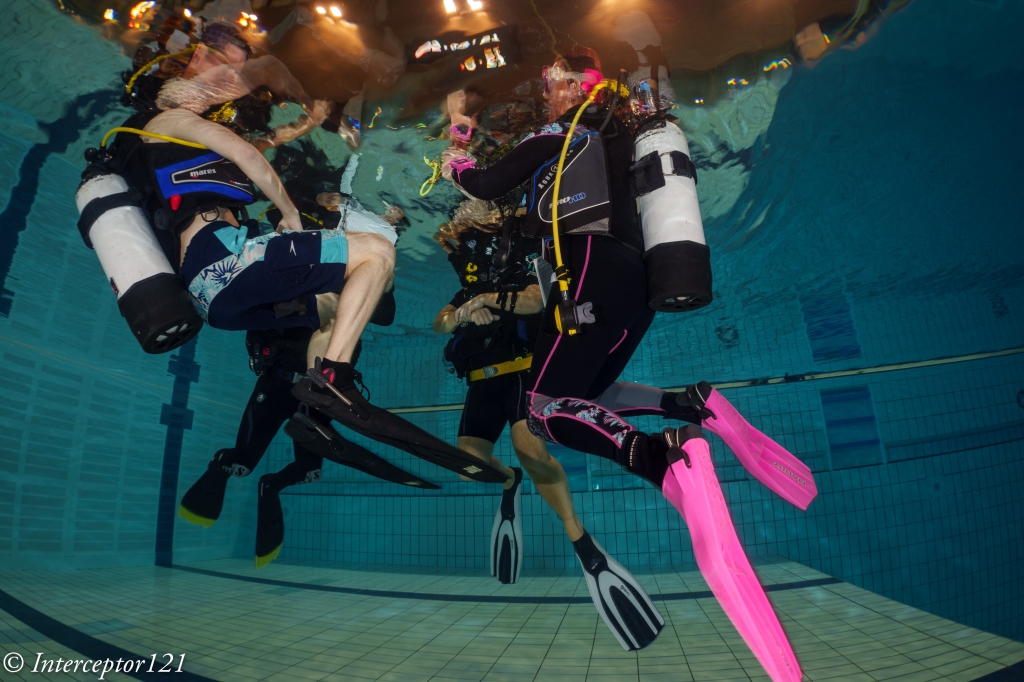
f/8 is probably the sweet spot for underwater use.
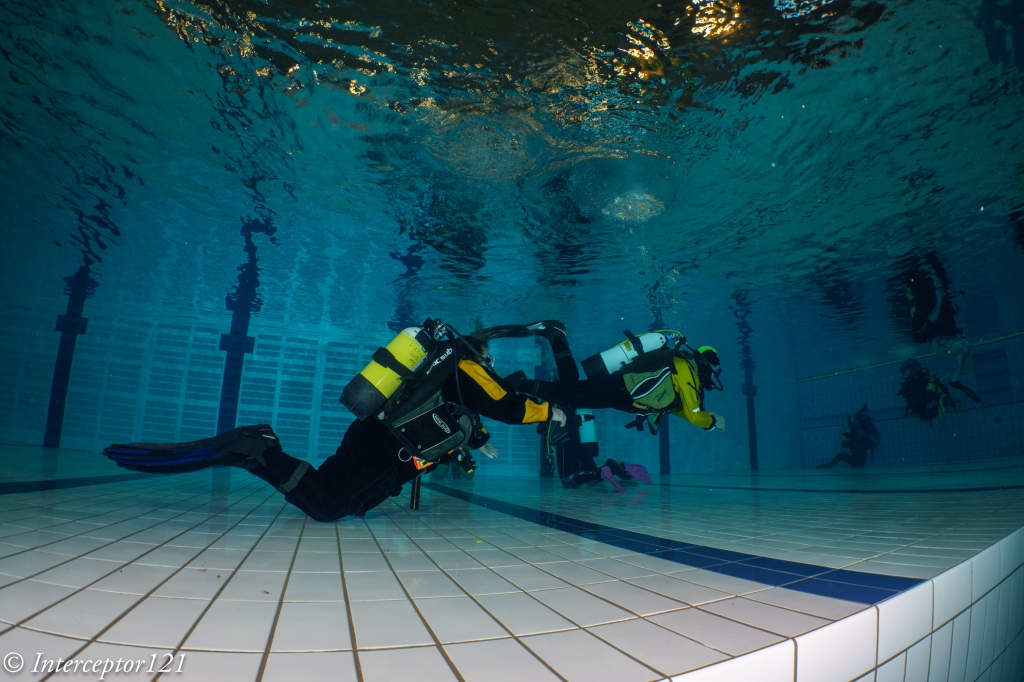

F/11 is really not needed unless you have a close up shot.
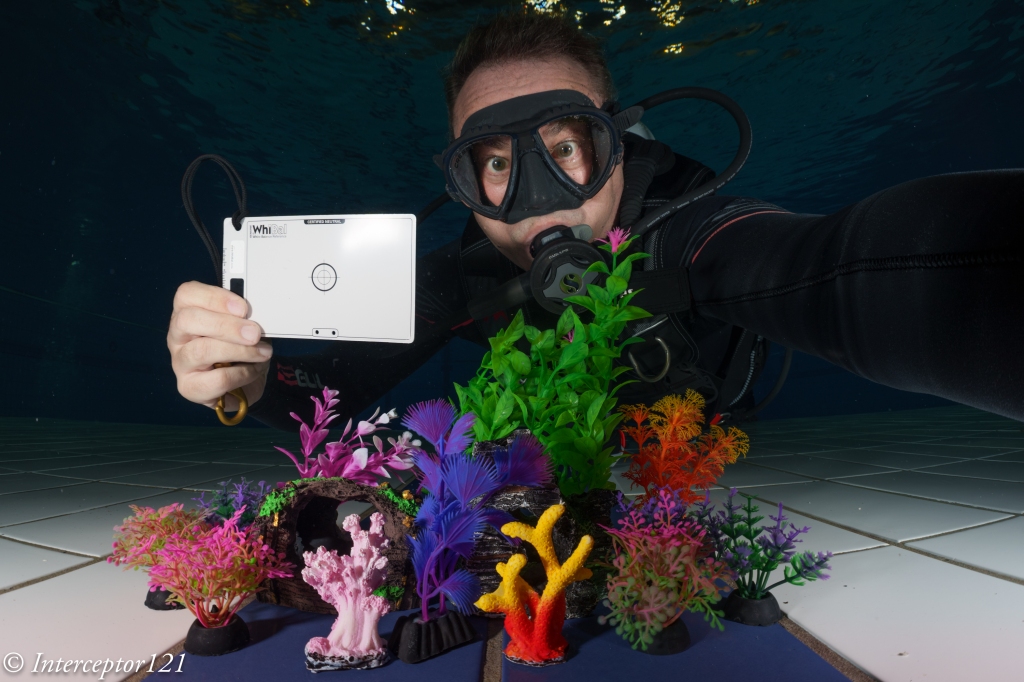
Conclusion
There are some obvious strengths to the Tamron 17-28mm which in my view performs at 28mm way better than the Sony 28-60mm even with a too long extension.
Upon reflection I have decided not to invest on the Tamron 28-75mm as I already have thr Sony 24-70mm GM2 and there is an overlap topside.
Edit 8 April: I received today the adapter ring I needed for the 28-75mm G2 and unfortunately there is vignette at 28mm ruling this lens out entirely for the WACP-C.
If you want to use the Tamron 17-28mm with the WACP-C you need an N120 to N100 25mm adaptor ring, in addition to the zoom gear (not necessarily unless you want to shoot also APSC) and the 35.5mm N100 to N120 port adapter.
The Tamron 17-28mm costs $799 on Amazon.com and it is the best rectilinear wide angle for underwater for the e-mount and we now discovered also compatible with WACP-C.
I will try other lenses in due course but the lesson learnt is that if you do your homework you will find something.
Thanks to Alex for the loan and bear with me a little longer!
